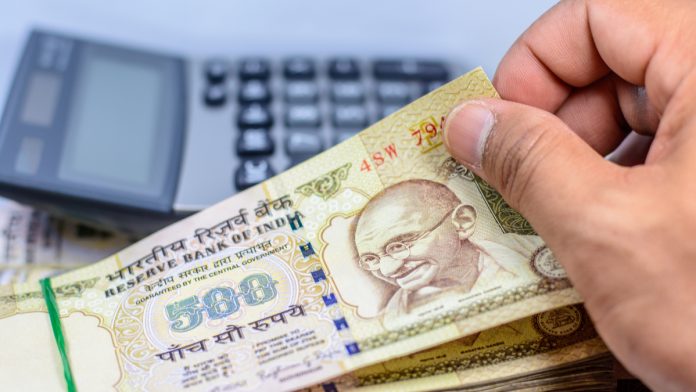- Indian Rupee (INR) rises as inflation roses at a slower pace
- Retail inflation rose 5.72%
- US Dollar (USD) falls as inflation cools
- US inflation rose 6.5% YoY
The US Dollar Indian Rupee (USD/INR) exchange rate is falling on Thursday paring small gains from the previous session. The pair settled +0.05% higher on Wednesday at 81.63. At 15.40:00 UTC, USD/INR trades -0.38% at 81.36.
India’s retail inflation cooled in December and remained within the Reserve Bank of India’s comfort zone as food prices eased. Inflation in December rose 5.72% year on year, down from 5.88% in the previous month. This was also below analysts’ forecasts of 5.9%.
Meanwhile, industrial output in India rose by more than expected, up 7.1% year on year in November, rebounding from a contraction of 4% in October. This was also ahead of forecasts of 2.6%.
Separately oil prices continued rising, lifted by optimism surrounding China’s economy reopening post zero-COVID. West Texas Intermediate trades 1.8% higher at the time of writing and is up over 6% across the week.
The US Dollar is falling across the board. The US Dollar Index, which measures the greenback versus a basket of major currencies, trades -0.53% at the time of writing at 102.33 after steep losses yesterday. The USD is set to rise modestly across the week in its third straight week of gains.
The US dollar is falling lower following the release of US inflation data. Inflation as measured by the consumer price index, fell in line with analysts’ forecasts to 6.5% year on year in December, down from 7.1% annually in November.
Core inflation which strips out more volatile items such as food and fuel, rose 5.7% year on year, down from 6% the previous month.
The data supports the view that the Federal Reserve could slow the pace of rate hikes in the upcoming meetings. The market is broadly expecting the Federal Reserve to raise interest rates by 25 basis points in February after a 50 basis point hike in December, which is pulling the USD lower.





